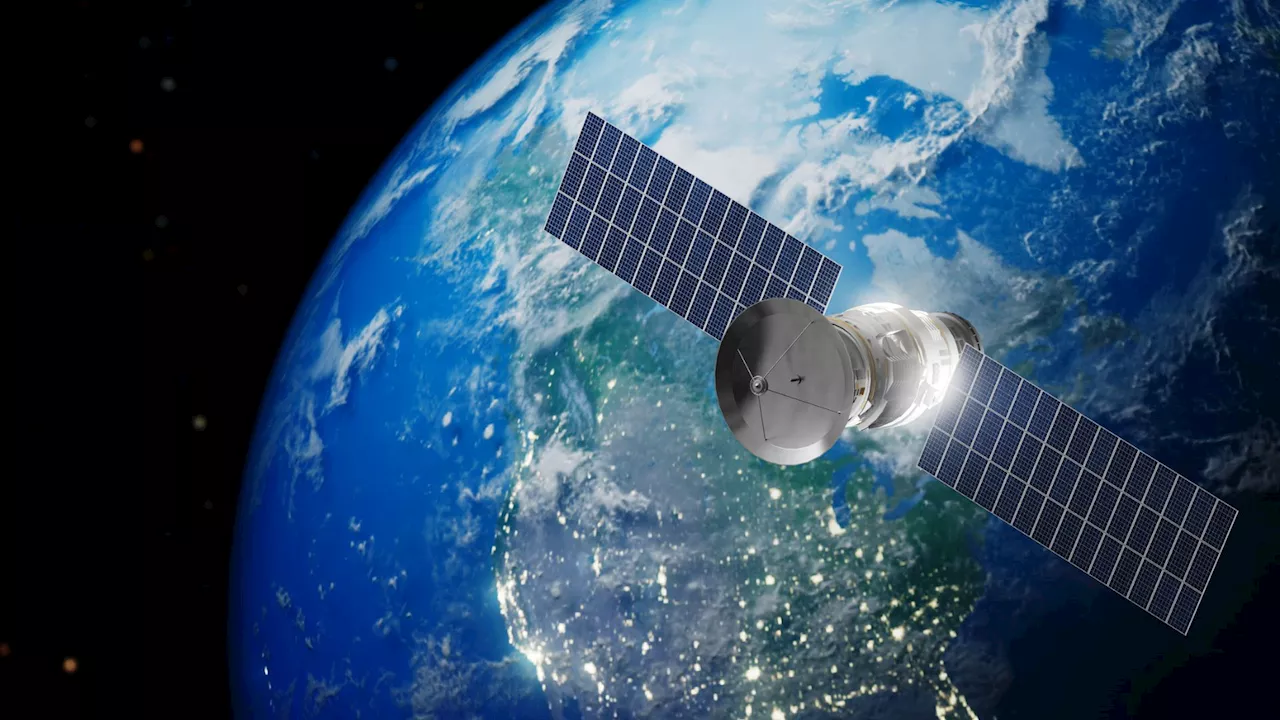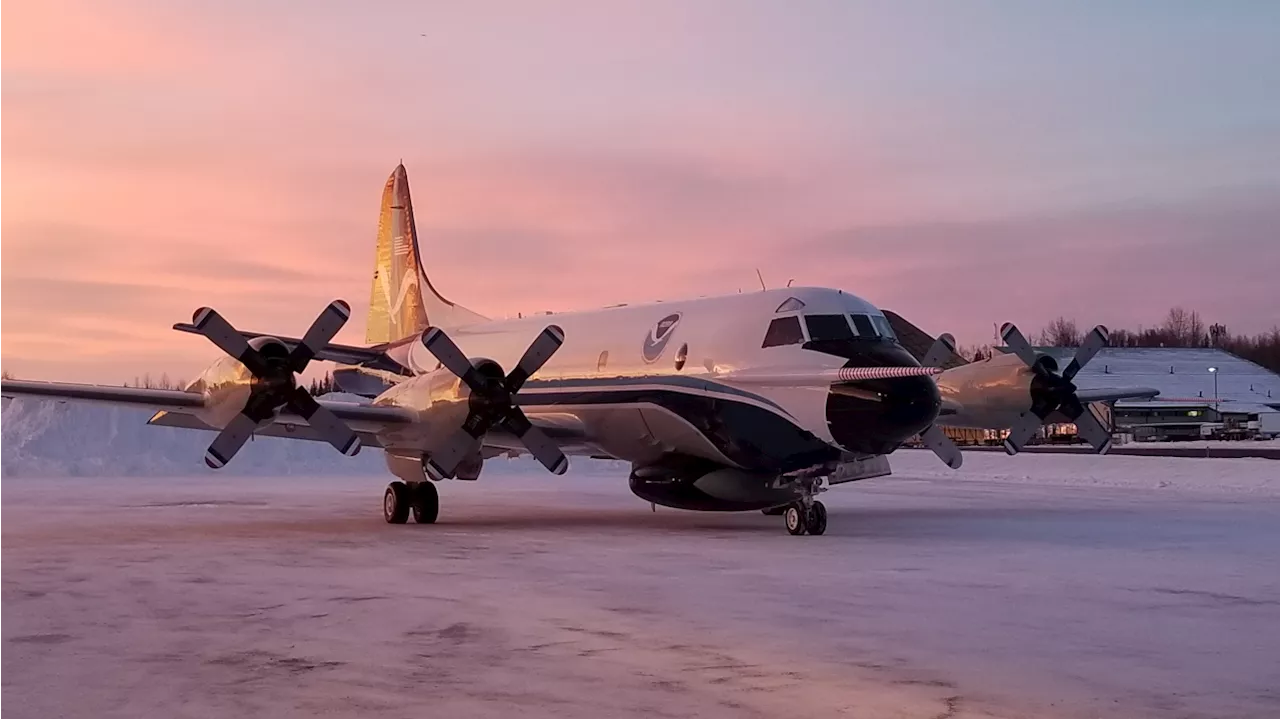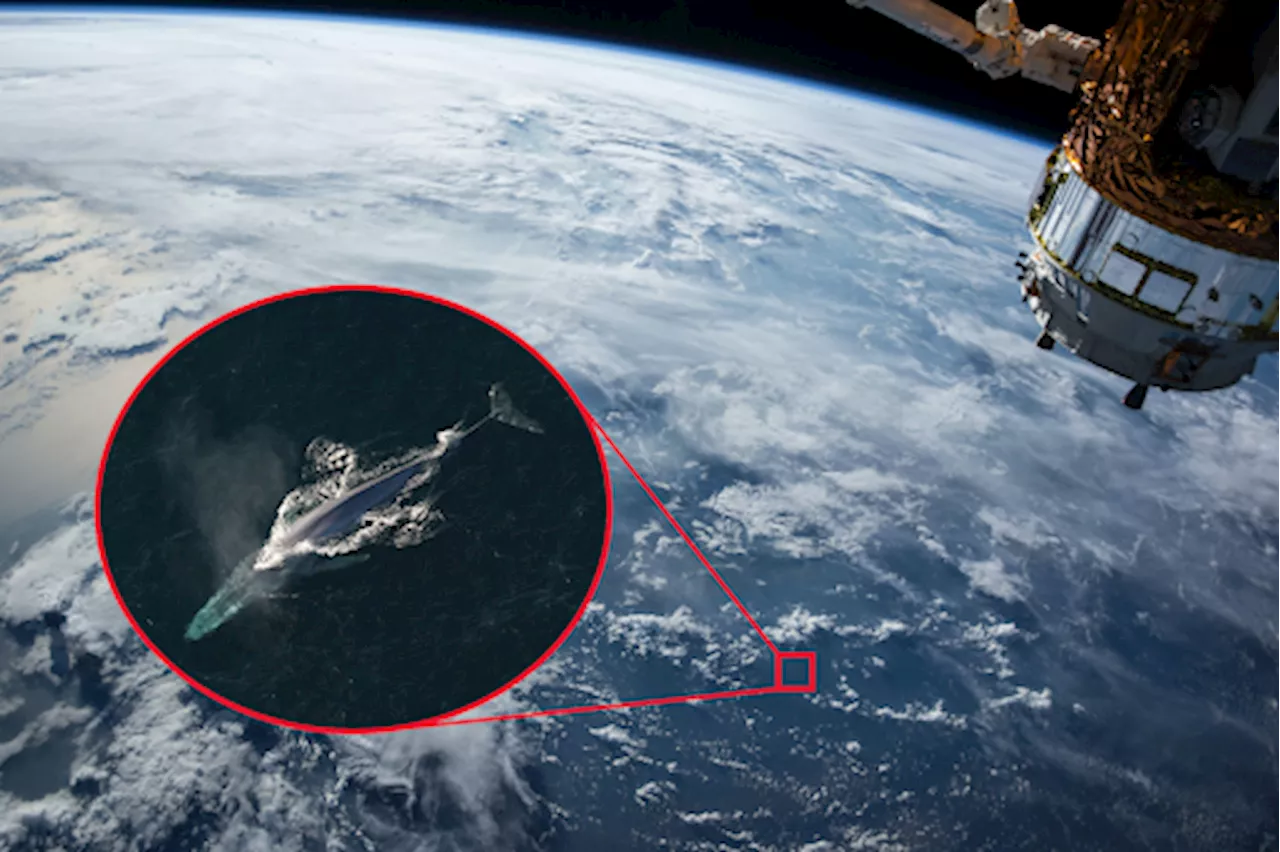This episode of Dive In with NOAA Fisheries explores the fascinating world of satellite technology and its vital role in understanding and managing our oceans. Ryan Vandermeulen, NOAA Fisheries Satellite Remote Sensing Coordinator, discusses how satellites are revolutionizing our understanding of oceanographic drivers and their impact on marine life. From monitoring ocean temperature and currents to detecting signs of fish and coral health, satellites provide a powerful tool for making informed decisions about fisheries and ocean conservation.
John Sheehan: When it comes to NOAA and how it uses satellites, I think my imagination used to stop at the weather and how TV stations will often show NOAA satellite imagery of hurricanes and storms. Ryan Vandermeulen: NOAA uses satellite data to track weather patterns. They can track storms and lightning and hurricanes, but also monitor hazards like fires or volcanic eruptions and, and air quality issues.
Sheehan: What I didn't know is how much more information satellites are providing scientists across the agency right now and specifically impacting fisheries. Vandermeulen: The really great thing about satellites is that they offer NOAA a really unique ability to collect data over very large areas over short periods of time. And this not only helps us gain a better understanding of our dynamic planet, but it can also help us make informed decisions about human safety as well as the sustainable use of our natural resources. Sheehan: This is Dive In with NOAA Fisheries. I'm John Sheehan, and today we'll hear from Ryan Vandermeulen, NOAA Fisheries Satellite Remote Sensing Coordinator. Ryan is a font of knowledge about satellites, having worked previously with NASA's Ocean Ecology Lab. He's also passionate about making satellite data more accessible to the average citizen who maybe doesn't know that much about satellites like me. Vandermeulen: Broadly speaking, in the oceans we use satellites to understand and monitor how the aquatic environment is changing over time. Things like monitoring the ocean's temperature, it, its salt content, the direction and intensity of ocean currents, and uh, of course, my personal favorite, the signs of microscopic life or even death within the ocean. Sheehan: Ryan sits at the intersection of satellite technology and NOAA fisheries needs for what that technology can provide. Vandermeulen: It's my primary role to communicate the needs of fisheries to the broader satellite community and also make sure that I'm keeping up with the latest and greatest in terms of satellite technology and letting folks know what new data becomes available and potentially new ways that it might be useful for fisheries management. Sheehan: And as we'll hear, there are incredible advances in satellite on the horizon, in addition to the current generation of satellites collecting all kinds of data above our heads right now. Vandermeulen: Yeah, there's all sorts of different things we can look at different parts of the electromagnetic spectrum, anything from X-rays to microwaves to visible light, ultraviolet light. And all these things are kind of telling you different things uh, about the environment, which is, it's really just... It kind of seems like black magic, but it's really cool. The way oceanographers are looking at the ocean is pretty similar to how meteorologists are looking at the weather, right? We're all concerned with large scale dynamics of heat, pressure, density. These are factors that are driving things like winds and ocean currents alike. And the magic here of satellites is that they're giving us insights into these really important oceanographic drivers and, and processes at roughly the same time and space scales that they're changing. In practical terms, it would take about roughly 11 years to measure what a satellite can detect in under two minutes on any given day. Right? So you can imagine that by the time a ship returns to its starting point, the information it collected 11 years ago is probably no longer representative of the current conditions. And that's not to diminish the role of ship based measurements. They're really critical to understanding things that we can't infer from satellites and even to help verify things that we can infer. Vandermeulen: But where satellites really excels in offering us repeatable broad scale measurements of the physical and biological environment, and they do so really efficiently with their ability to see things that our puny inferior human eyeballs are really capable of seeing. For instance, you know, satellites can detect thermal infrared light, which is directly relating to the temperature of the ocean. And this temperature alone uh, influences the behavior of fish, it uh, could cause bleaching of corals and affect weather along the coast and from the satellites, we're, we're seeing these temperatures rise across the globe. But we're also able to really key in on specific areas that are being impacted more than others. Sheehan: And can you sort of connect the dots for us for sort of how, you know, now that you have this, as you say, sort of almost real time uh, data collection of all these different factors, how does that play into uh, how managers are, are applying that towards fisheries
NOAA Satellites Fisheries Oceanography Data Analysis Environmental Monitoring
United States Latest News, United States Headlines
Similar News:You can also read news stories similar to this one that we have collected from other news sources.
 NOAA Satellites Track Massive California WildfireNOAA satellites are providing crucial real-time data on the Palisades Fire, a deadly wildfire burning in Los Angeles, California. Images from the satellites reveal the fire's growth, intensity, and smoke plume movement.
NOAA Satellites Track Massive California WildfireNOAA satellites are providing crucial real-time data on the Palisades Fire, a deadly wildfire burning in Los Angeles, California. Images from the satellites reveal the fire's growth, intensity, and smoke plume movement.
Read more »
 China’s whale-inspired tech ‘hunts’ 1,400 Starlink satellites in record timeChinese researchers demonstrated that 99 satellites could approach 1,400 Starlink satellites within 12 hours.
China’s whale-inspired tech ‘hunts’ 1,400 Starlink satellites in record timeChinese researchers demonstrated that 99 satellites could approach 1,400 Starlink satellites within 12 hours.
Read more »
 NOAA Aircraft Gather Data on Winter StormsNOAA aircraft fly into winter storms to gather data on ocean surface wind conditions, helping to test, calibrate, and validate instruments on NOAA weather satellites.
NOAA Aircraft Gather Data on Winter StormsNOAA aircraft fly into winter storms to gather data on ocean surface wind conditions, helping to test, calibrate, and validate instruments on NOAA weather satellites.
Read more »
 NOAA's WP-3D Orion Collects Ocean Wind Data in North Pacific Winter StormsNOAA's WP-3D Orion aircraft flew into winter storms over the North Pacific Ocean to gather information on ocean surface wind conditions. This data will be used to test, calibrate, and validate instruments flown on NOAA weather satellites.
NOAA's WP-3D Orion Collects Ocean Wind Data in North Pacific Winter StormsNOAA's WP-3D Orion aircraft flew into winter storms over the North Pacific Ocean to gather information on ocean surface wind conditions. This data will be used to test, calibrate, and validate instruments flown on NOAA weather satellites.
Read more »
Unlocking Athletic Potential Through Foundational Movements and KettlebellsThis article explores the importance of foundational movements and innovative tools like kettlebells in training athletes. It emphasizes building a solid foundation of movement patterns through exercises like squats, lunges, pull-ups, and push-ups. The article also delves into the utility of kettlebell swings, highlighting their applications in both strength training and high-repetition conditioning workouts.
Read more »
 Finance: The Key to Unlocking AI's True PotentialWhile companies are rapidly adopting AI, many struggle to achieve tangible results. This article emphasizes the crucial role of finance in maximizing AI investments, highlighting how early and consistent involvement of finance teams can transform AI from a promising concept into a reliable growth engine.
Finance: The Key to Unlocking AI's True PotentialWhile companies are rapidly adopting AI, many struggle to achieve tangible results. This article emphasizes the crucial role of finance in maximizing AI investments, highlighting how early and consistent involvement of finance teams can transform AI from a promising concept into a reliable growth engine.
Read more »
